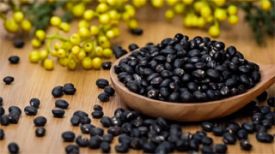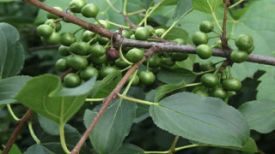Drug name: Elsholtzia fragrans
Nicknames: Xiangru, Xiangcao
Source: "Record of Famous Doctors"
Classification: Antitumor drugs
Origin: Jiangxi, Hebei, Henan and other places
Sex and taste: slightly warm and spicy in nature
Meridian return: return to the lung, spleen, and stomach meridians
Effect: Sweating and relieving the exterior, dispelling dampness and calming, promoting diuresis and reducing swelling
Indications: External wind cold, internal injury with heat and dampness, aversion to cold, fever, headache, no sweating, abdominal pain, diarrhea, edema, difficulty urinating, and edema of the foot
Character identification
This product is 30-50cm long, with a purple red base and a yellow green or light yellow upper part. It is densely covered with white fur. The stem is square and columnar in shape, with a diameter of 1-2mm and distinct nodes. The internodes are 4-7cm long; Crunchy and easily broken. The leaves are opposite, often wrinkled or falling off. After flattening, the leaves become long oval or lanceolate, dark green or yellow green, with sparse serrations at the edges. Spike inflorescences terminal and axillary, bracts broadly ovate, shedding or remaining; Calyx persistent, bell shaped, light purple red or grayish green, apex 5-lobed, densely covered with hairs. Small nut 4, nearly spherical in shape, with a mesh pattern and a shallow concave space between the mesh. The air is fragrant and strong, and the taste is slightly spicy and cool.
Usage&Taboos
Internal administration: decoction, 3-10 grams, or ground powder. Used for publication, the amount should not be too large, and should not be fried for a long time; Used for promoting diuresis and reducing swelling, the amount should be slightly large and should be heavily fried.
Taboos: Those with superficial deficiency, sweating, and heat syndrome should avoid taking it.
chemical composition
This product contains volatile oil, which mainly contains components such as coumarin and thymol; Also contains sterols, flavonoid glycosides, etc.
Pharmacological action 1. Inhibition: The volatile oil of this product has an inhibitory effect on Escherichia coli and Staphylococcus aureus. 2. Effect on isolated intestinal smooth muscle: The volatile oil of Elsholtzia has a strong direct inhibitory effect on the spontaneous contraction activity of isolated ileum in mice, rats, guinea pigs, and rabbits.
Traditional Chinese Medicine Appendix 1: Treatment for sudden bleeding on the tongue, such as drilling holes: Take one liter of Elsholtzia juice daily for three days. (From "Behind the Elbow") 2. Treatment of cholera and vomiting, pain in limbs, cold sweating, and excessive thirst: Two liang of Elsholtzia, one liang of Polygonum, coarse sieving of two herbs. Take a dagger of two coins per serving, one cup of water, fry for seven minutes, remove any residue, and warm up for three days. (Fragrant Elsholtzia Decoction in the Records of Saint Ji)
Ancient book records
Famous Doctor's Record: The main cause of cholera is abdominal pain, vomiting, and scattered edema.
The Compendium of Materia Medica: Elsholtzia, with its Xin San Wen Tong, can relieve the heat energy caused by cold stagnation, cholera abdominal pain, vomiting and turning tendons. It is often caused by excessive eating during the summer months, resulting in a combination of external evils and internal injuries. When the Xin Wen Qi is used, it can harmonize with the middle and relieve external injuries, thus governing the body. For those with scattered water and swelling, it is also effective in removing dampness and promoting diuresis.
Traditional Chinese Medicine - Elsholtzia sinensis
Release time:2024-06-03 16:15:45
Reading:205
Word Count:3588
Subscribe to email
▣ Recommendation


